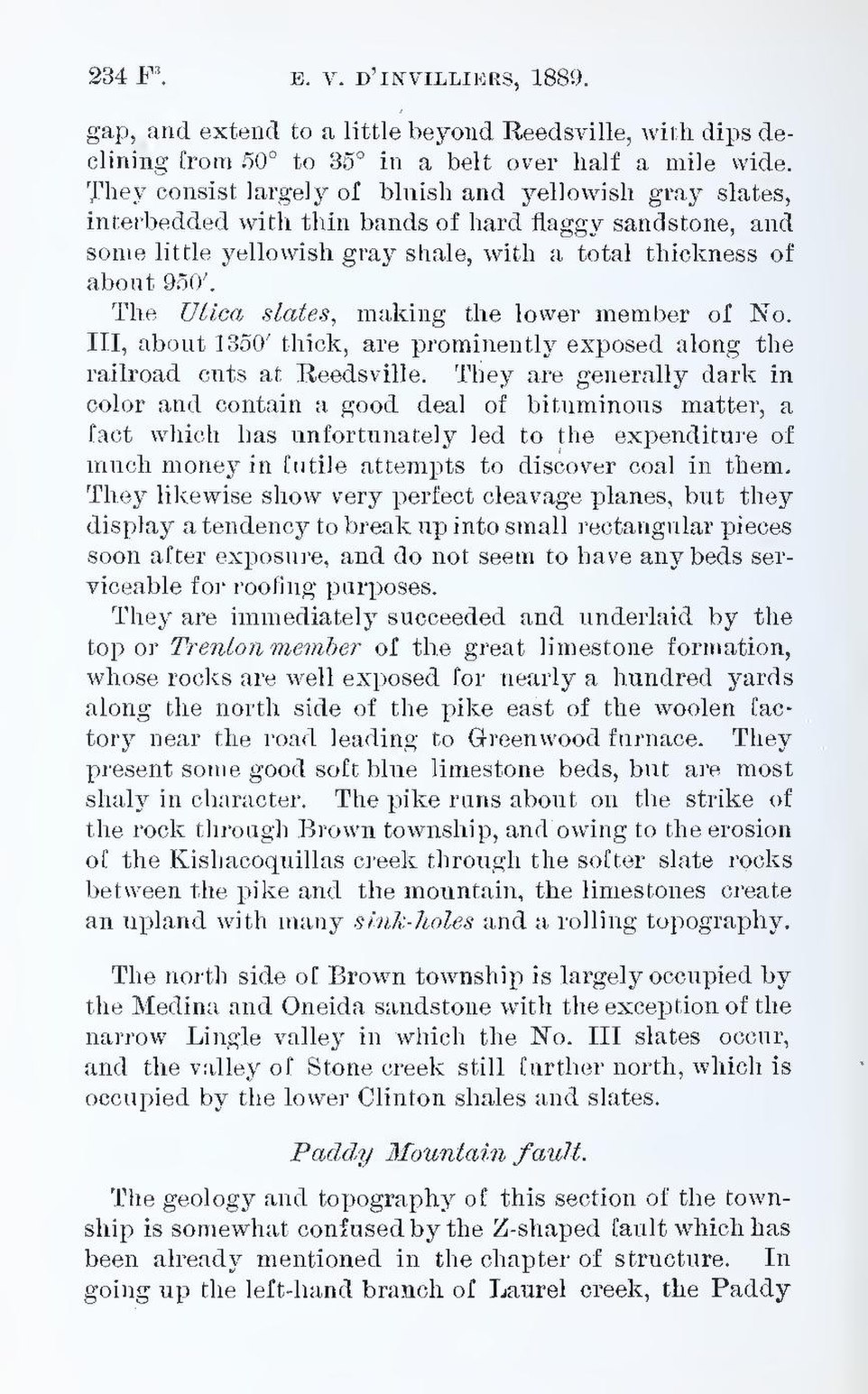gap, and extend to a little beyond Reedsville, with dips de- clining from 50° to 35° in a belt over half a mile wide. They consist largely of bluish and yellowish gray slates, interbedded with thin bands of hard flagey sandstone, and some little yellowish gray shale, with a total thickness of about 950′.
The Utica slates, making the lower member of No. III, about 1350′ thick, are prominently exposed along the railroad cuts at Reedsville. They are generally dark in color and contain a good deal of bituminous matter, a fact which has unfortunately led to the expenditure of much money in futile attempts to discover coal in them. They likewise show very perfect cleavage planes, but they display a tendency to break up into small rectangular pieces soon after exposure, and do not seem to have any beds serviceable for roofing purposes,
They are immediately succeeded and underlaid by the top or Trenton member of the great limestone formation, whose rocks are well exposed for nearly a hundred yards along the north side of the pike east of the woolen fac- tory near the road leading to Greenwood furnace. They present some good soft blue limestone beds, but are most shaly in character. The pike runs about on the strike of the rock through Brown township, and owing to the erosion of the Kishacoquillas creek through the softer slate rocks between the pike and the mountain, the limestones create an upland with many sink-holes and a rolling topography.
The north side of Brown township is largely occupied by the Medina and Oneida sandstone with the exception of the narrow Lingle valley in which the No. III slates occur, and the valley of Stone creek still farther north, which is occupied by the lower Clinton shales and slates.
Paddy Mountain fault.
The geology and topography of this section of the township is somewhat confused by the 𝖹-shaped fault which has been already mentioned in the chapter of structure. In going up the left-hand branch of Laurel creek, the Paddy
